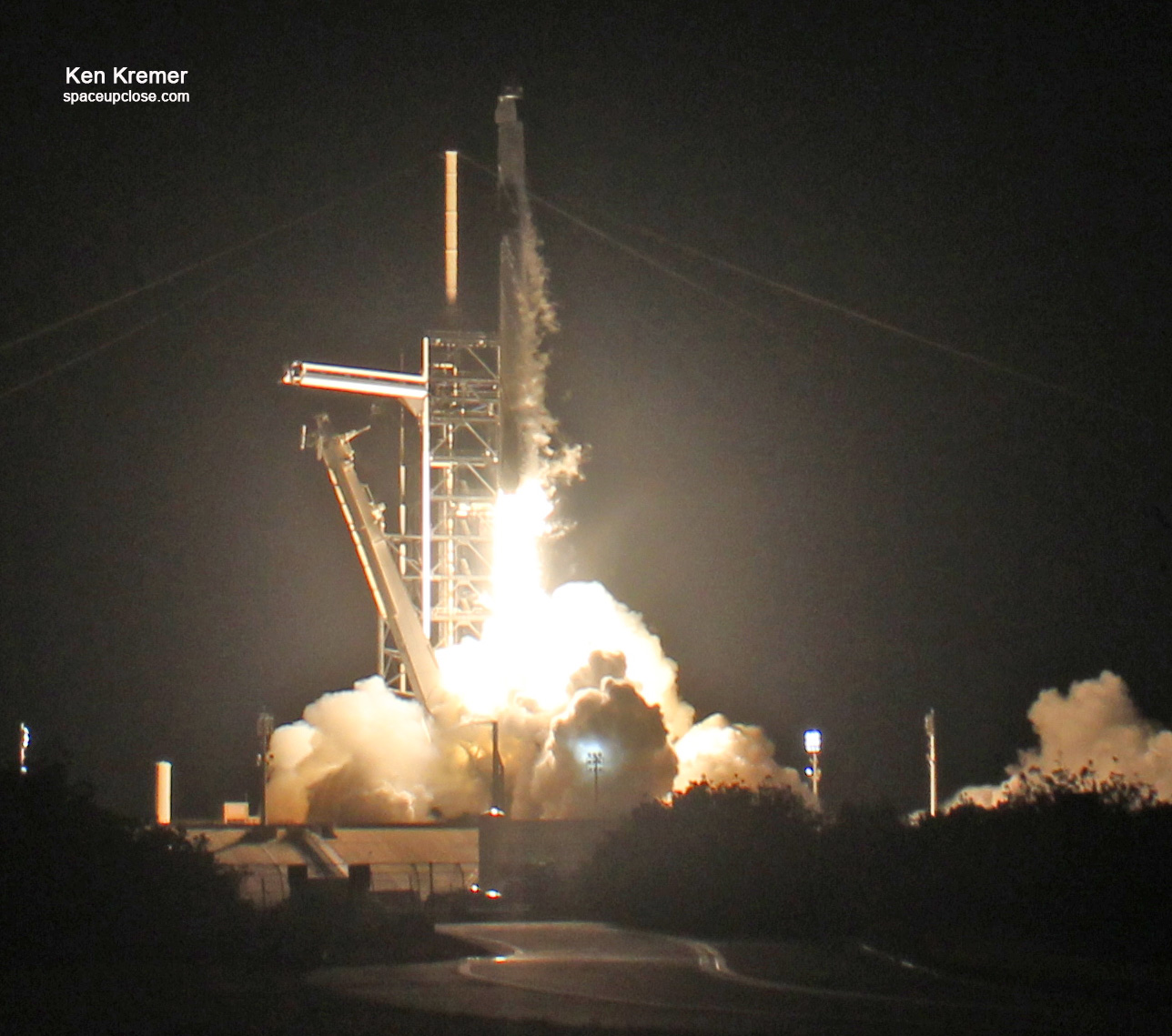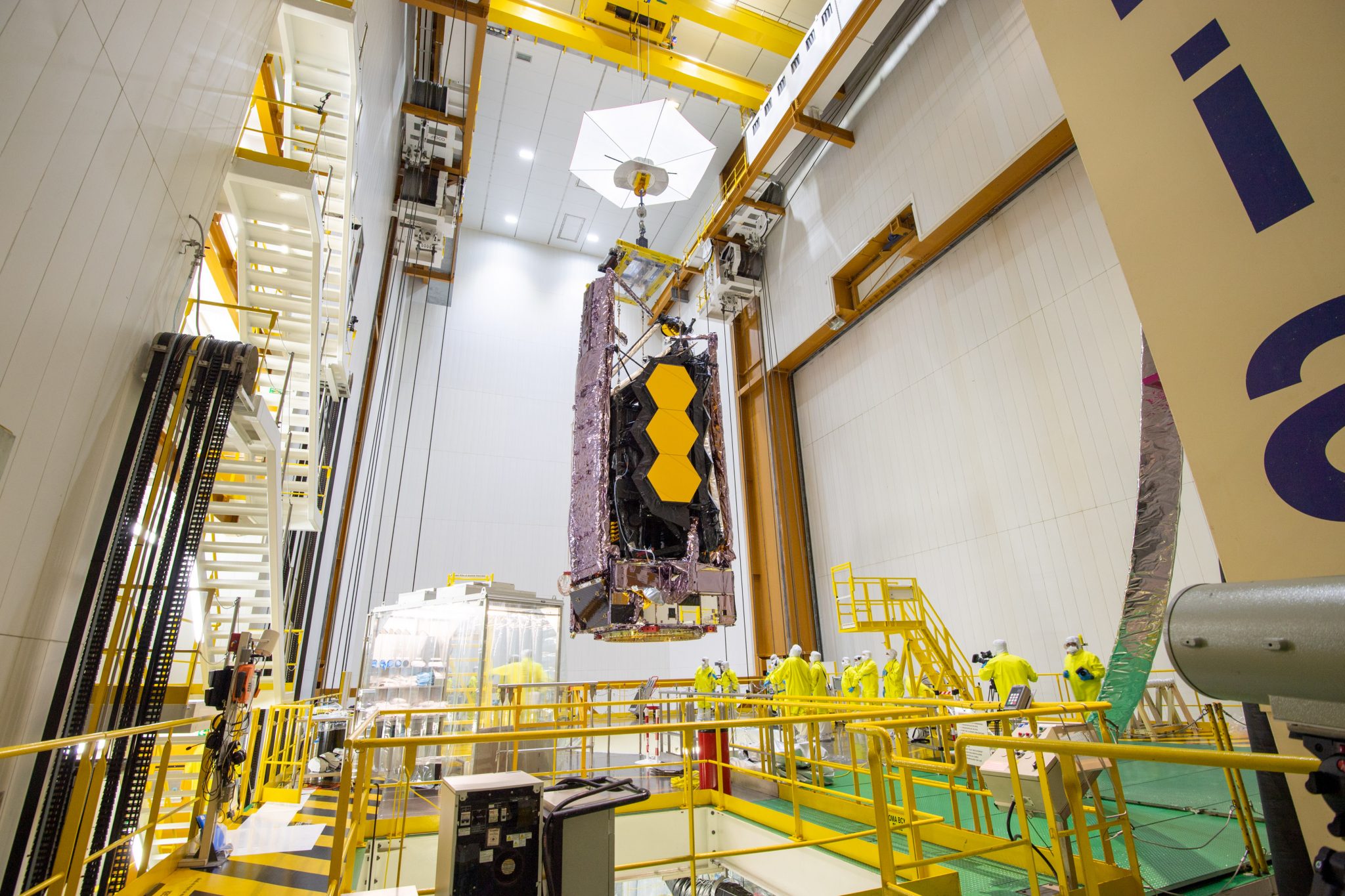
For SpaceUpClose.com & RocketSTEM
CAPE CANAVERAL, FL – The fully fueled NASA James Webb Space Telescope (JWST) has been mated and encapsulated in its nose cone and stands ready for launch to space now targeting Christmas Eve, Dec. 24 on an Arianespace Ariane 5 rocket from Kourou, French Guiana following resolution of last minute communications glitches that delayed liftoff by another 48 hours to begin its groundbreaking science observations peering back to nearly the beginning of time that are sure to rewrite textbooks worldwide.
The Webb observatory is targeted to launch at 7:20 a.m. EST (12:20 GMT / 13:20 CET). Friday, Dec. 24, on an Arianespace Ariane 5 rocket from Europe’s Spaceport in Kourou, French Guiana, on the northeastern coast of South America.
Webb is the largest and most powerful science telescope payload ever launched from Earth. It will operate in a halo orbit at the L2 Lagrange point approx. 1 million miles (1.6 million km) from Earth after liftoff and about a 1-month journey.
It is also the most expensive science instrument ever costing nearly $9.8 Billion – and the successor to the Hubble Space Telescope.
The encapsulation of Webb inside the 5.4 meter wide Ariane 5 payload fairing atop the rocket was completed by technicians and engineers late Friday, Dec. 17.
Those preparations were interrupted when a communications glitch was discovered between the observatory and the launch vehicle system.
If all goes well with the final launch readiness review (LRR) on Tue., Dec. 21, the integrated Ariane 5/JWST stack will roll out to the launch pad on Wed., Dec. 22, in anticipation of liftoff two days later, Friday morning, Dec. 24.
“Late yesterday [Dec. 17], teams at the launch site successfully completed encapsulation of the observatory inside the Ariane 5 rocket that will launch it to space,” the European Space Agency (ESA) reported.
“Webb’s launch final readiness review will be held on Tuesday 21 December and, if successful, roll-out is planned for Wednesday 22 December.”
The James Webb Space Telescope has been encapsulated inside its @Ariane5 rocket fairing, and is set to launch on Dec. 24: https://t.co/Urn4URx938
📸: @esa-Manuel Pedoussaut pic.twitter.com/vFlbPOPAnu
— NASA Webb Telescope (@NASAWebb) December 18, 2021
With Webb folded up origami style for flight it was encapsulated inside the nose cone with little clearance which measures 5.4 meters in diameter and 17 meters tall.
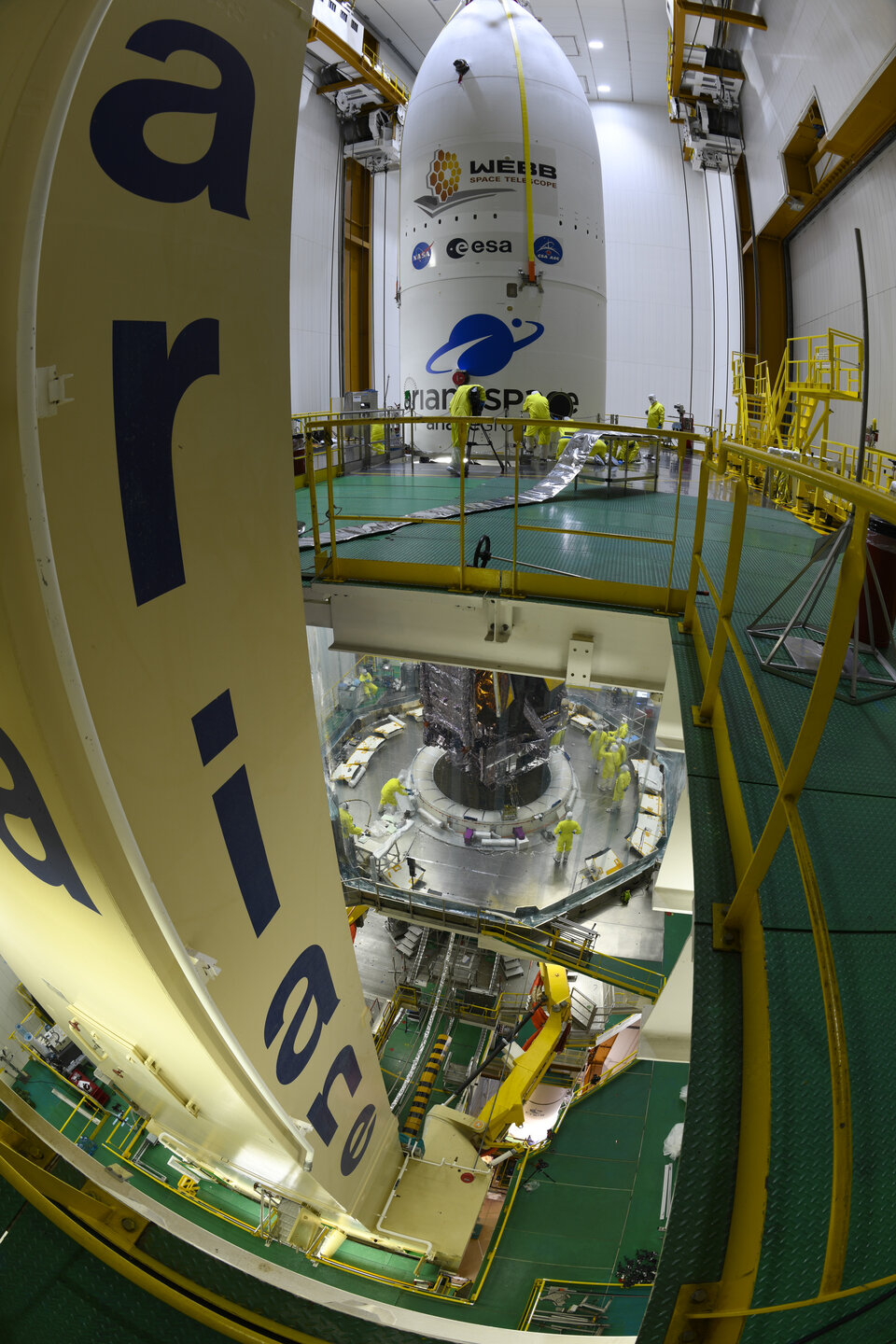
The go ahead for launch preparations was given after engineers figured out the “finicky” connectivity issue.
“Just in from the Webb launch site: The team has fixed the connection issue and @NASAWebb is in the midst of its final scheduled aliveness test before launch. We’ll provide an additional update on the status of encapsulation and the launch date tomorrow,” Thomas Zurbuchen, head of NASA’s science mission directorate tweeted Dec. 16.
Just in from the Webb launch site: The team has fixed the connection issue and @NASAWebb is in the midst of its final scheduled aliveness test before launch. We’ll provide an additional update on the status of encapsulation and the launch date tomorrow. pic.twitter.com/ehFVzfeeCI
— Thomas Zurbuchen (@Dr_ThomasZ) December 16, 2021
“It’s an interface issue in the electrical network connecting the observatory and the ground support equipment. Or, to be more precise, it’s a cable located in the launch table which is experiencing intermittent losses of data,” said Daniel Neuenschwander, ESA director of space transportation at a Dec. 16 NASA ESA update briefing about the technical issue and the launch.
“We’re not taking any risks with Webb,” said Thomas Zurbuchen, head of NASA’s science mission directorate. “It’s already risky enough the way it is. We’re absolutely making sure everything works.”
The encapsulation of Webb was completed after technicians hoisted and mated the telescope to the top of the Ariane 5 upper stage.
Latest @NASAWebb update from @arianespaceceo below. Thank you to the international teams for all they are doing. https://t.co/ThsmxZKsLx
— Thomas Zurbuchen (@Dr_ThomasZ) December 17, 2021
After finishing fueling Webb was transferred on Dec. 7 to the final assembly building at Europe’s Spaceport in French Guiana while stowed inside a special transport container and mobile clean room.
“Webb’s vitals were meticulously monitored throughout the entire process of moving between buildings” NASA reported.
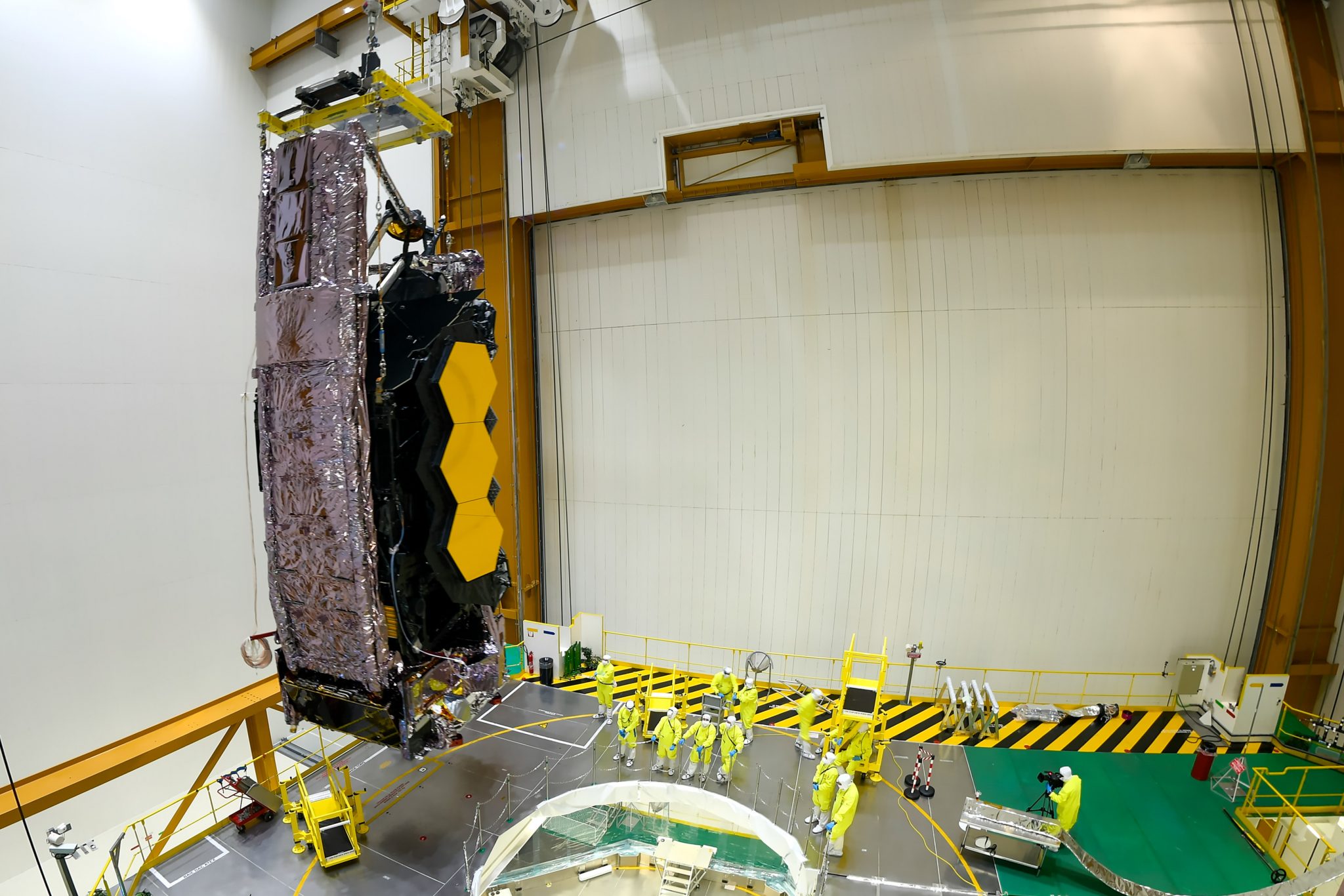
For mating to Arianne 5 Webb was lifted slowly about 40 meter high and then carefully maneuvered on top of the rocket. Technicians then bolted the telescopes launch vehicle adapter down to the rocket.
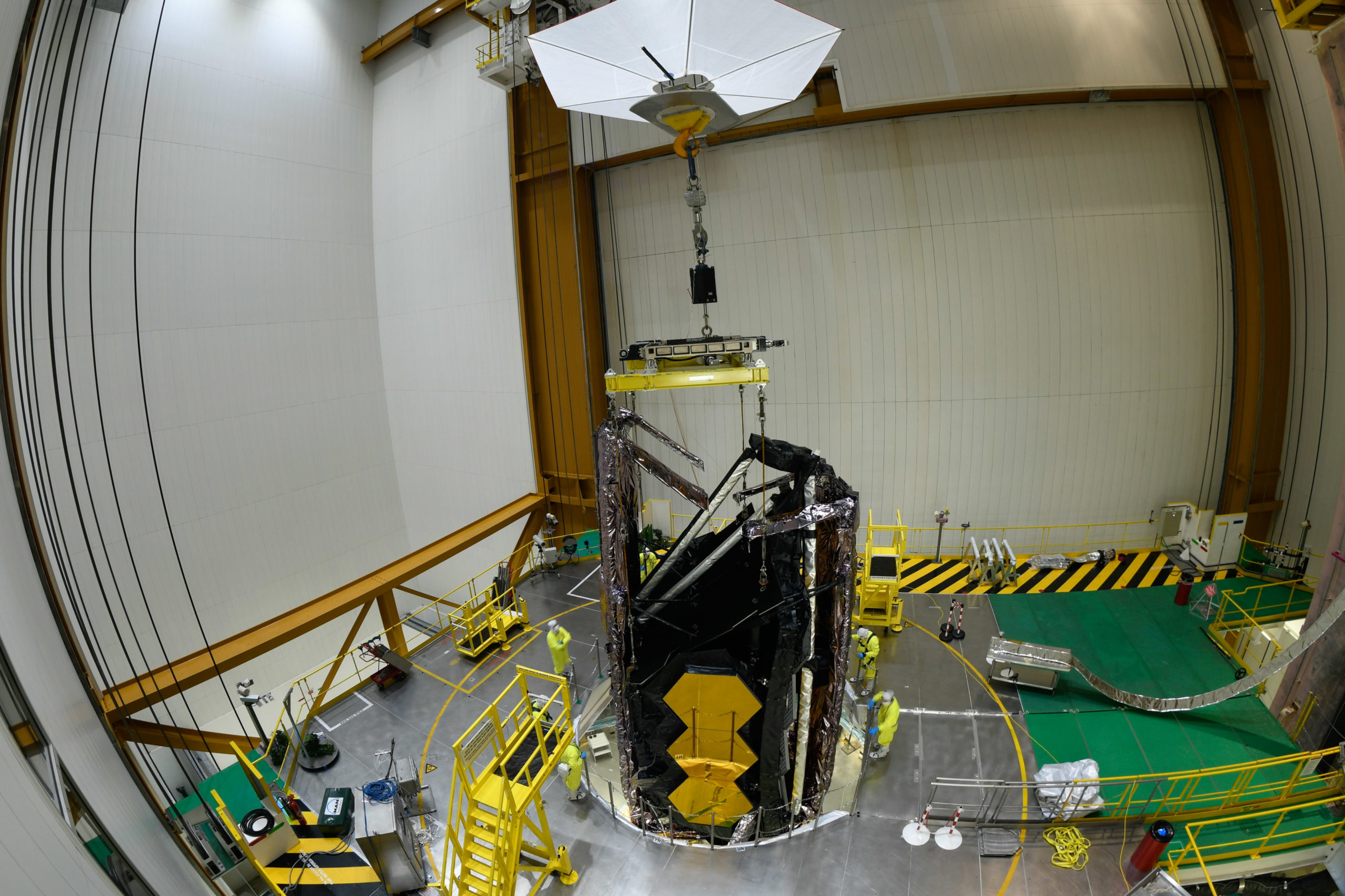
“This whole process was performed under strict safety and cleanliness regulations, as it was one of the most delicate operations during the entire launch campaign for Webb, reported ESA.
“A ‘shower curtain’ about 12 m high and 8 m in diameter was installed in between two platforms, to create a closed-off space around Webb to avoid any contamination.”
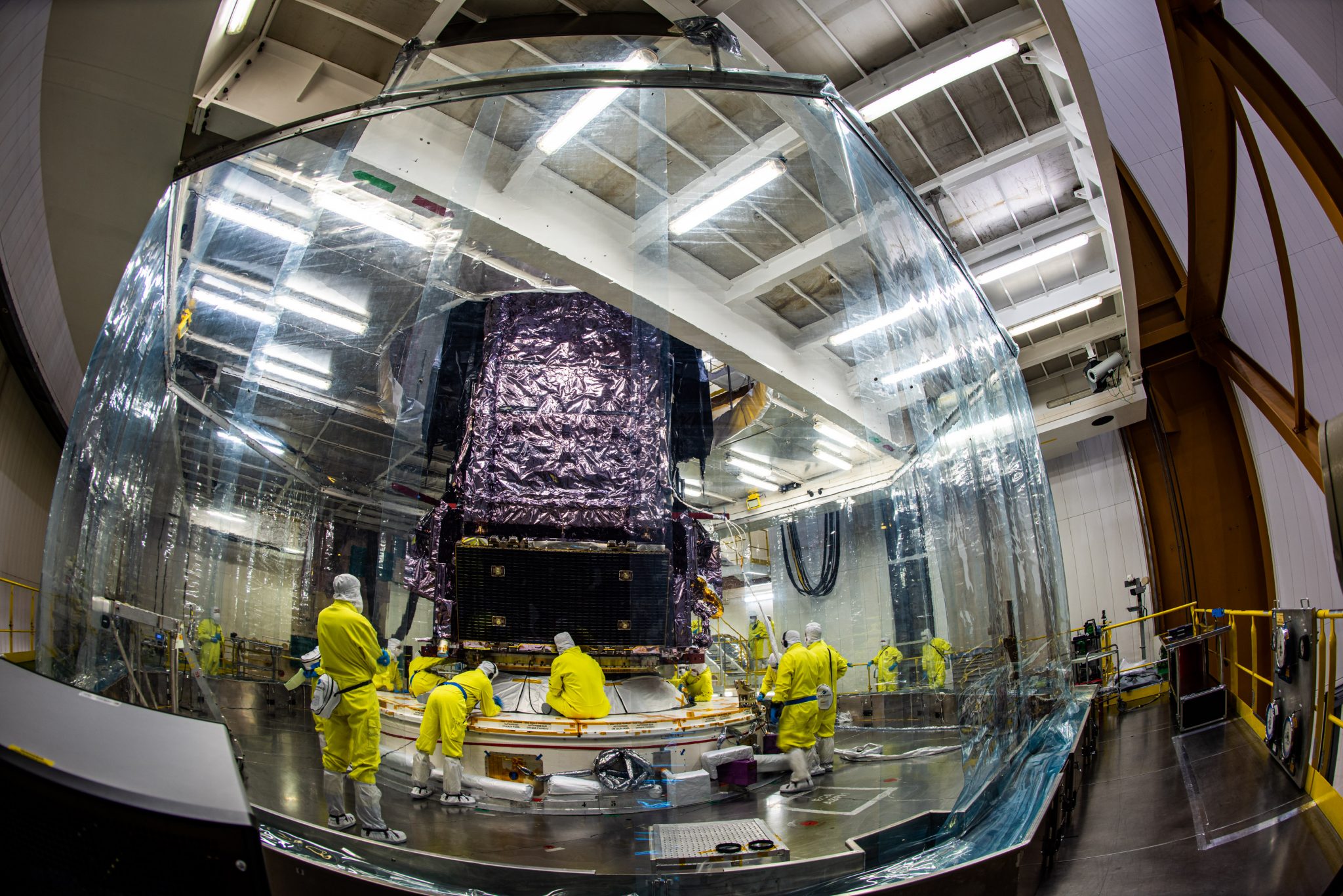
Webbs primary mirror is comprised of 18 segmented gold coated individual mirror segment that measure 6.5 meters in diameter when unfurled.
In space it is protected by a tennis court sized sunshade of 5 layers
Webb is equipped with 4 state-of-the-art science observing instruments.
The largest space observatory in history will carry an ultra-cool camera aboard: the MIRI instrument. It’s one of four scientific instruments on @NASAWebb, and to operate, it must be cooled to almost the coldest temperature matter can reach!
Why so cold?👉 https://t.co/pvw3er8r0N pic.twitter.com/gEQNUk785B— NASA JPL (@NASAJPL) December 15, 2021
NASA is planning extensive prelaunch and launch coverage of the JWST mission.
Details here:
https://www.nasa.gov/mission_pages/webb/main/index.html
https://www.nasa.gov/feature/nasa-invites-public-to-share-excitement-of-webb-space-telescope-launch
Live countdown commentary and launch broadcast coverage coverage will begin at 6 a.m. Friday, Dec. 24, on NASA TV, the NASA app, and the agency’s website. The public can also watch live on Facebook, Twitter, YouTube, Twitch, and Daily Motion.
NASA will hold a prelaunch media briefing at 2 p.m. on Tuesday, Dec. 21, and a postlaunch news conference approximately 30 minutes after the live launch broadcast ends on Friday, Dec. 24.
The James Webb Space Telescope is nestled all snug in its rocket, and now visions of launch can dance in your head — and on your screens!
📺 Learn how you can watch along as we #UnfoldTheUniverse on Dec. 24: https://t.co/t7r1hfB8X9 pic.twitter.com/jPUScj5i7X
— NASA Webb Telescope (@NASAWebb) December 18, 2021
The Webb Telescope is a joint international collaborative project between NASA, the European Space Agency (ESA) and the Canadian Space Agency (CSA).
Webb is designed to look at the first light of the Universe and will be able to peer back in time to when the first stars and first galaxies were forming. It will also study the history of our universe and the formation of our solar system as well as other solar systems and exoplanets, some of which may be capable of supporting life on planets similar to Earth.
“It will explore every phase of cosmic history – from within our solar system to the most distant observable galaxies in the early universe, and everything in between. Webb will reveal new and unexpected discoveries, and help humanity understand the origins of the universe and our place in it,” says NASA.
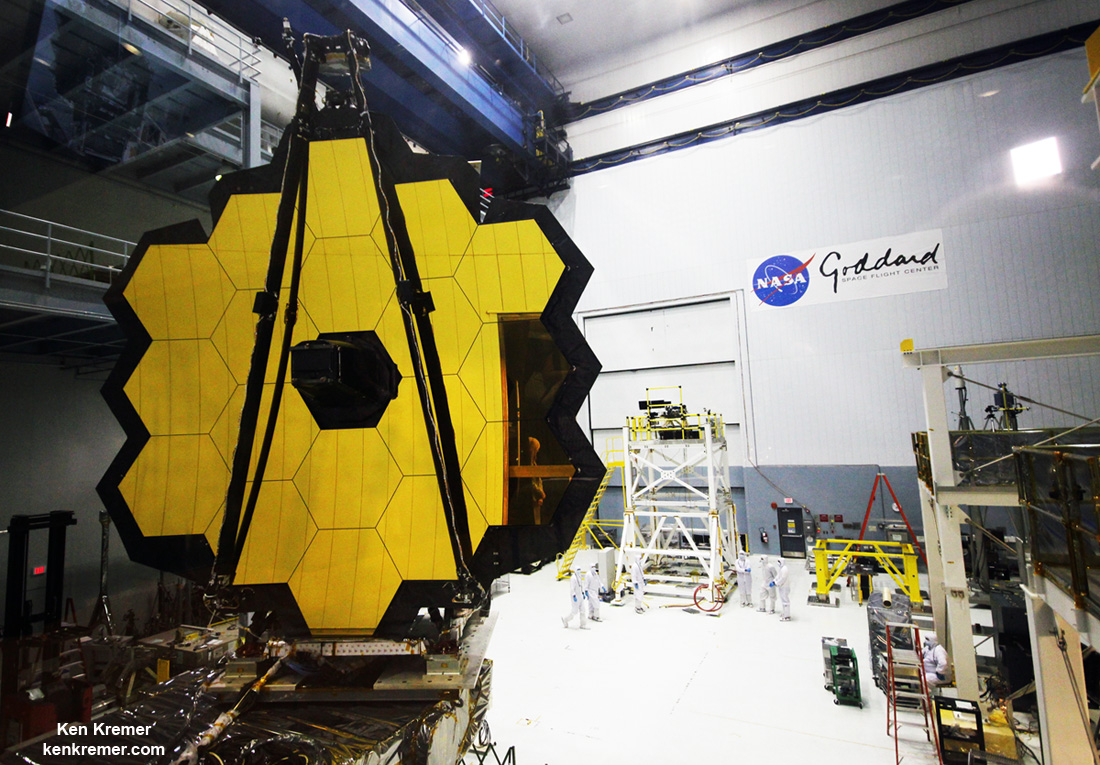
I observed JWST many times while under construction at NASA Goddard Spaceflight Center in Greenbelt, MD.
This photo shows the science instrument/mirror module in the Goddard cleanroom after installation of the 18 primary mirrors was completed.
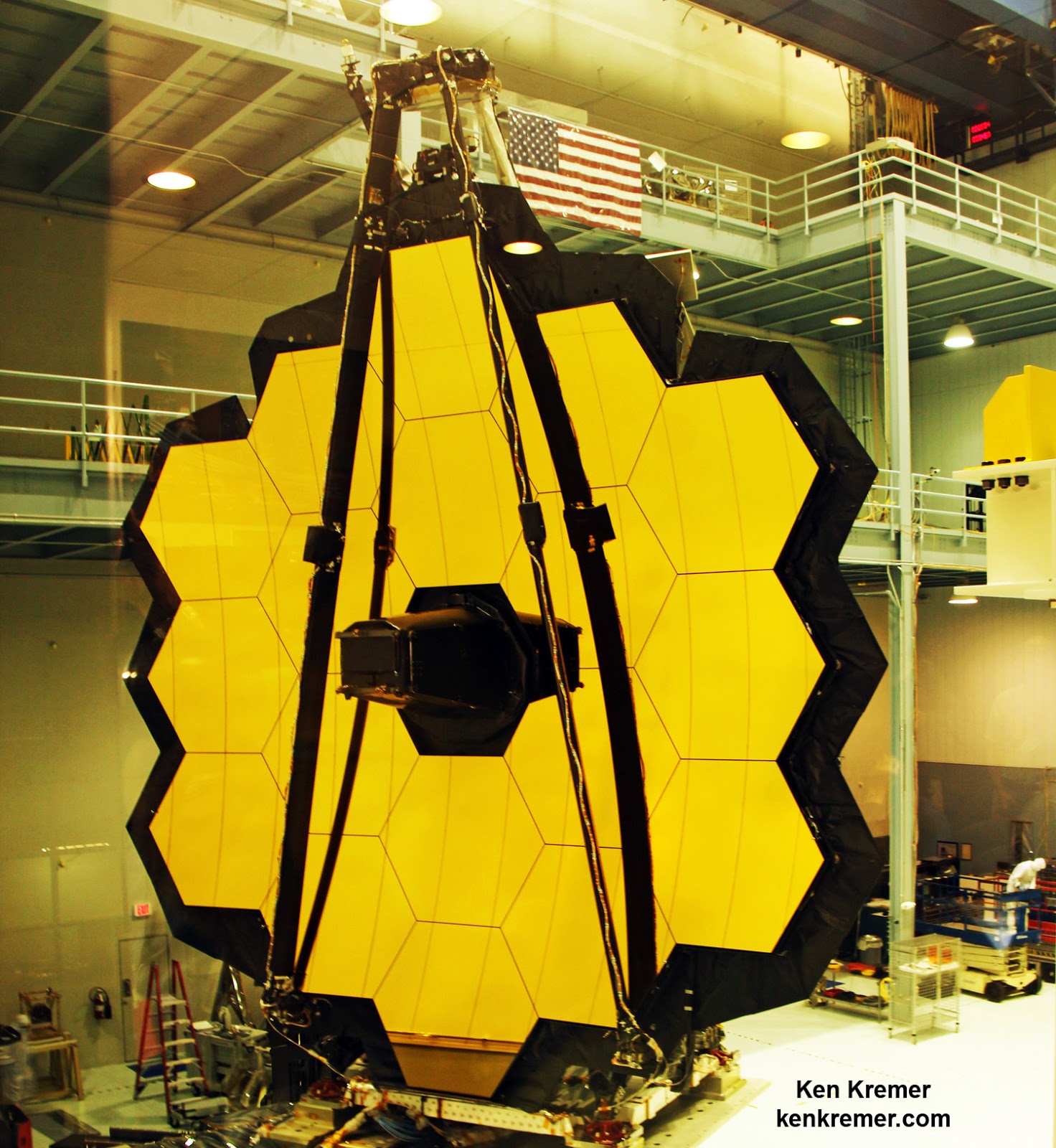
JWST is the largest, most powerful and most complex space telescope ever built. It will serve as the scientific successor to NASA’s world famous and phenomenally successful Hubble Space Telescope (HST).
It will be launched on an Ariane 5 rocket, folded up like origami inside the nose cone which measures 5.4 meters in diameter and 17 meters tall.
Given that Ariane 5's fairing is 5.4 meters in diameter and 17 meters tall; do you know the telescope's dimensions?#WebbFliesAriane #ArianeGroup #Ariane5 pic.twitter.com/a1YXySOnNA
— ArianeGroup (@ArianeGroup) December 10, 2021
Watch this space for my ongoing reports on JWST mirrors, science, construction and testing.
Watch Ken’s continuing reports about JWST, IXPE, DART, SpaceX Crew and Cargo Dragons, Artemis, SLS, Orion and NASA missions, Lucy Asteroid mission, SpaceX Starlink, Blue Origin and Space Tourism, Commercial Crew and Starliner and Crew Dragon and onsite for live reporting of upcoming and recent SpaceX and ULA launches including Crew 1 & 2 & 3, ISS, Solar Orbiter, Mars 2020 Perseverance and Curiosity rovers, NRO spysats and national security missions and more at the Kennedy Space Center and Cape Canaveral Space Force Station.
Stay tuned here for Ken’s continuing Earth and Planetary science and human spaceflight news: www.kenkremer.com –www.spaceupclose.com – twitter @ken_kremer – email: ken at kenkremer.com
Dr. Kremer is a research scientist and journalist based in the KSC area, active in outreach and interviewed regularly on TV and radio about space topics.
………….
Ken’s photos are for sale and he is available for lectures and outreach events
Please consider supporting Ken’s work by purchasing his photos and/or donating at Patreon:
https://www.patreon.com/kenkremer
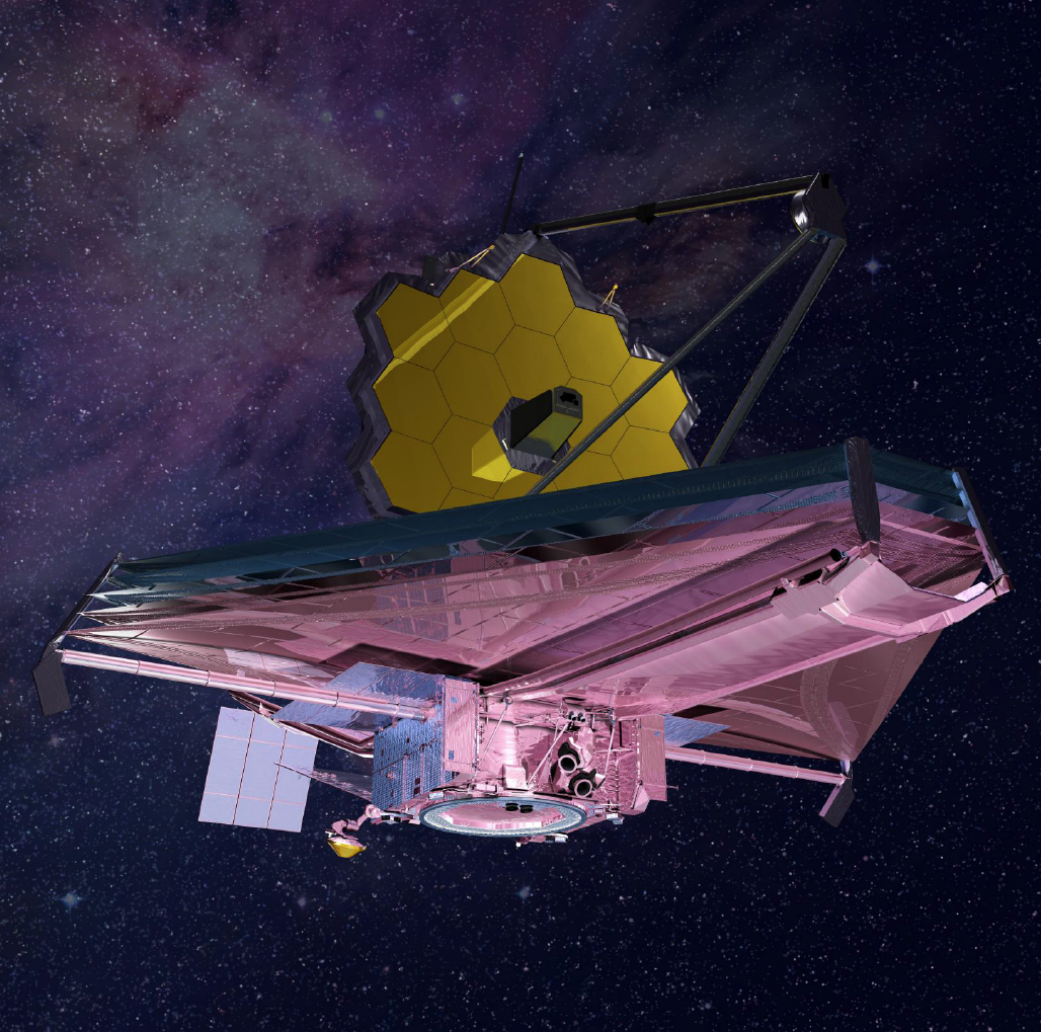
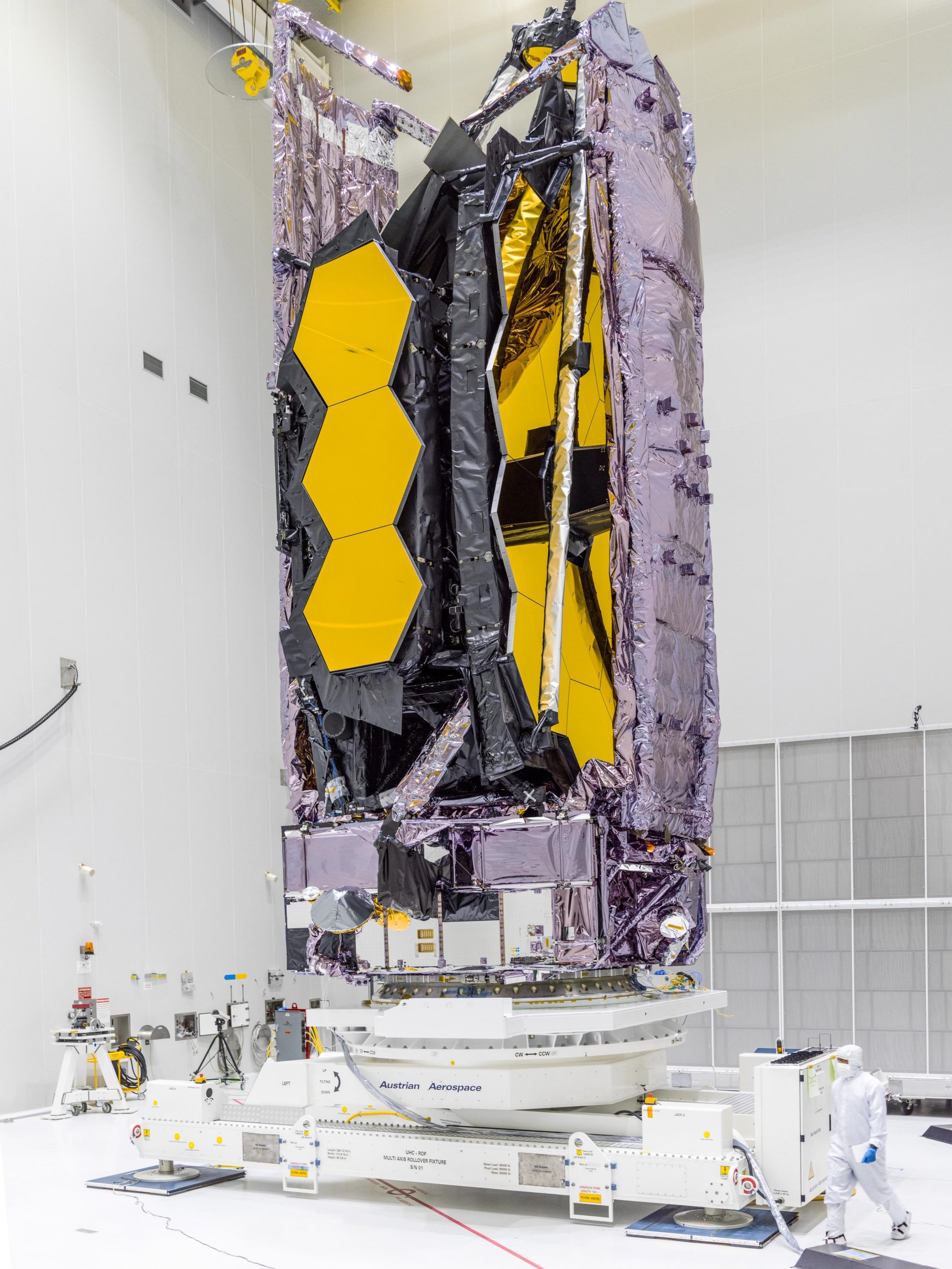
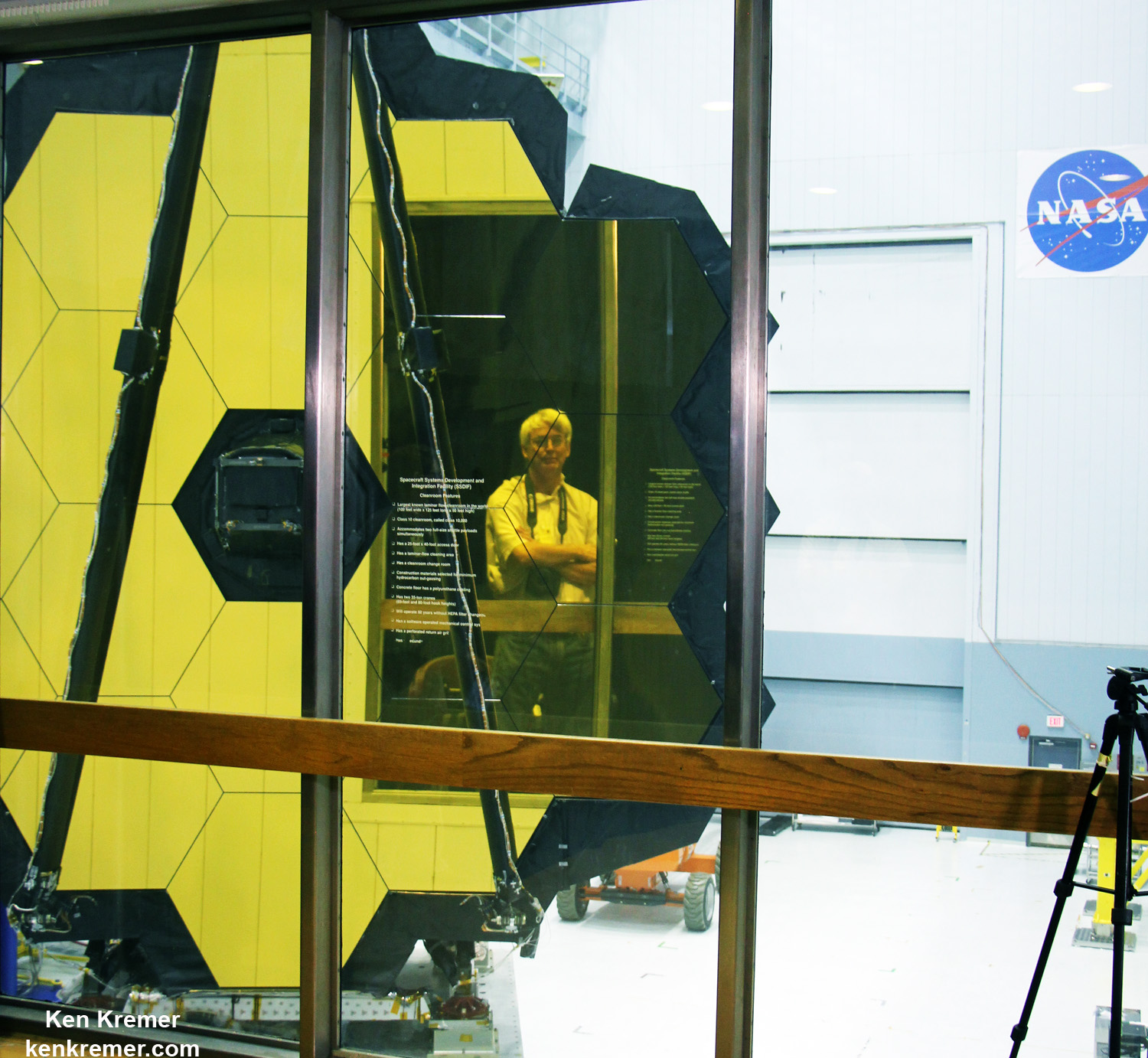
x


